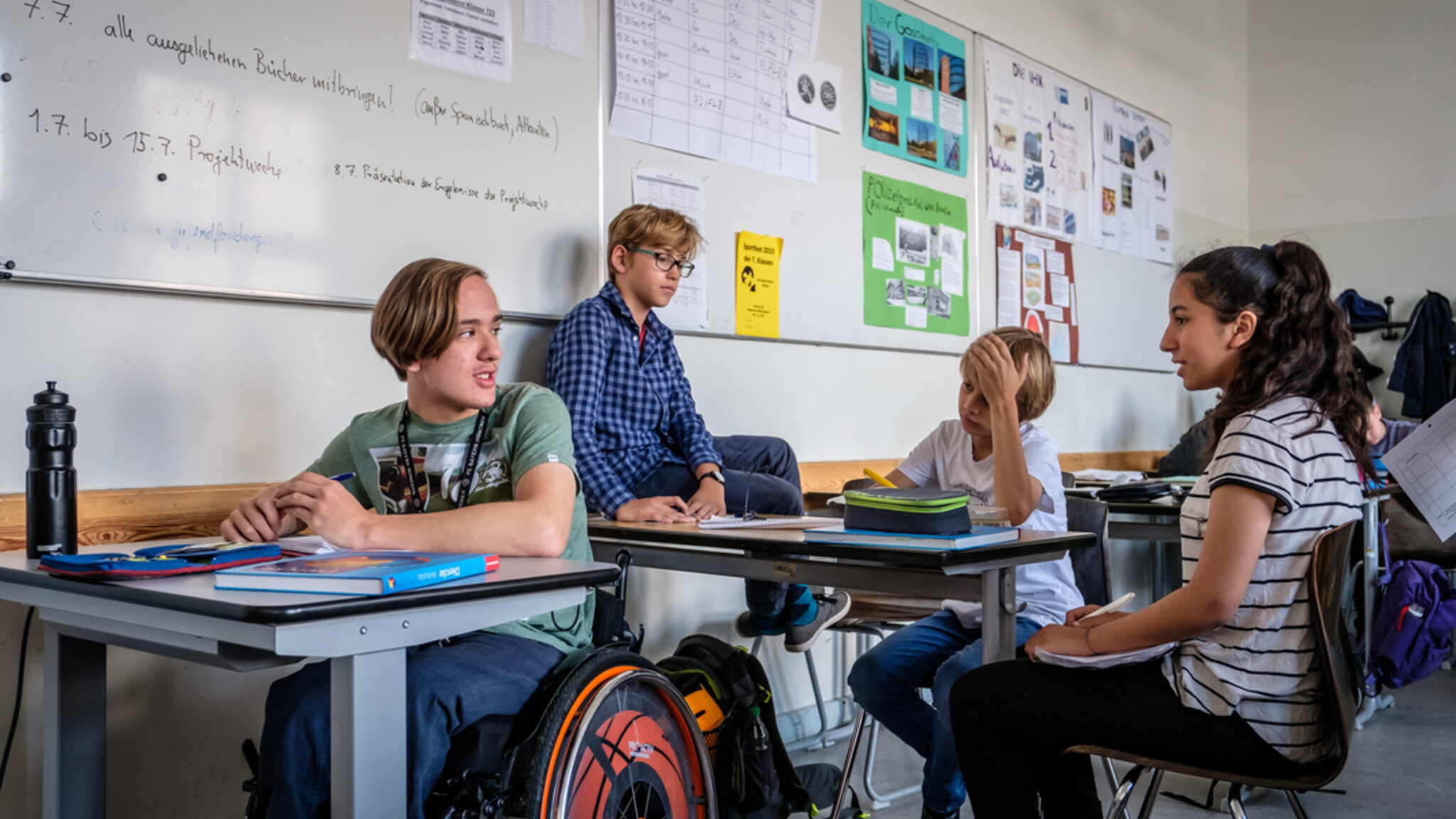Structural framework > Society
Child and youth services and cooperation with schools
The German education system is in the midst of transitioning from the traditional half-day school to all-day schools with extended responsibilities. These go beyond academic performance (lessons) to include
- improving work-life balance (care),
- improving education equity (still unsatisfactory in Germany),
- shaping inclusive learning for children with and without disabilities,
- influencing the quality of education,
- improving quality of life for children and adolescents,
- promoting democracy and diversity.
To achieve this, schools must cooperate with child and youth services.
Schools and child and youth services jointly contribute to the development of local education landscapes.
Notes
Under Germany's federal structure, responsibility for school education resides with the 16 federal states (Länder), which pass state education laws regulating the education system within their geographical remit. Certain aspects of these laws can vary considerably between states. However, education as a whole is compulsory across Germany. It starts at the age of 6 and (depending on the federal state) lasts for 9 or 10 years.
Compulsory schooling begins after the elementary level (child day-care) for 1- to 6-year-olds. Although children are legally entitled to early childhood education, there is no obligation to take up the services available. In most federal states, basic compulsory education begins at primary school and lasts for 4 years (6 years in Berlin and Brandenburg). After this, pupils enter lower secondary education where they are placed in one of several discrete school types (typically: secondary modern school, secondary technical school, or grammar school) based on their academic performance up to that point. Alternatively, they can opt to attend a comprehensive school in which children of all educational abilities are taught under one roof. Many states also offer other school forms, such as schools for children with special educational needs, the further development of which has for many years been the subject of struggle with respect to the obligation to safeguard equal participation for young people with disabilities. Compulsory schooling ends once pupils reach the end of lower secondary education, whereupon they can opt to enter one of several forms of upper secondary education – typically grammar school classes 11-12/13, higher technical school, technical school/vocational school – to prepare for university or to train in a specific profession.

Although conceived as a place of formal learning, school, particularly since the expansion into the all-day school, is also a social environment in which pupils spend large portions of their day amongst peers and with adult educators. Since the federal government's 12th Child and Youth Report (2006), there has been growing support for the view that schooling which focusses solely on qualifications and selection (grading) must be expanded significantly with the goal of better coordinating and meshing formal learning (school) with non-formal and informal learning (child and youth services) and the relevant institutions.
Due to the prevalence of all-day schools, it is inevitable that the life circumstances and lifeworlds of children and adolescents will become a relevant factor. All-day schools need to be equipped to handle all of the responsibilities and problems associated with skills-learning, pastoral care, upbringing and education. If this is to happen, the school must be receptive to expert perspectives and the real-world offerings of child and youth services.
This framework creates prospects – both with and outside of the individual school – for cooperation between schools and child and youth services with other educational settings and providers of education in local education landscapes.
For all that, the locus of child and youth services is always the "school", i.e., it must "play a structurally permanent institutionalised away game whilst massively outnumbered and ultimately dominated by rules outside of its control".
Further reading
- Bollweg, Petra/Buchna, Jennifer/Coelen, Thomas/Otto, Hans-Uwe (eds.) (2020): Handbuch Ganztagsbildung. 2nd revised and extended edition, Wiesbaden.
- Bundesjugendkuratorium (2020): Zwischenruf des Bundesjugendkuratoriums: Rechtsanspruch auf Ganztagsbetreuung für Kinder im Grundschulalter (last accessed 10 July 2023).
- Coelen, Thomas/Gusinde, Frank/Rother, Pia (2018): Schule. In: Böllert, Karin (ed.): Kompendium der Kinder- und Jugendhilfe Bd. 1. Wiesbaden, p. 467−487.
- Hansbauer, Peter/Merchel, Joachim/Schone, Reinhold (2020): Kinder- und Jugendhilfe – Grundlagen, Handlungsfelder, professionelle Anforderungen. Stuttgart.
![[Translate to Englisch:] [Translate to Englisch:]](/fileadmin/_processed_/e/b/csm_2021_09_28_Myles-Tan-WNAO036c6FM-unsplash_kleinIII_0ed92e37b3.jpg)

